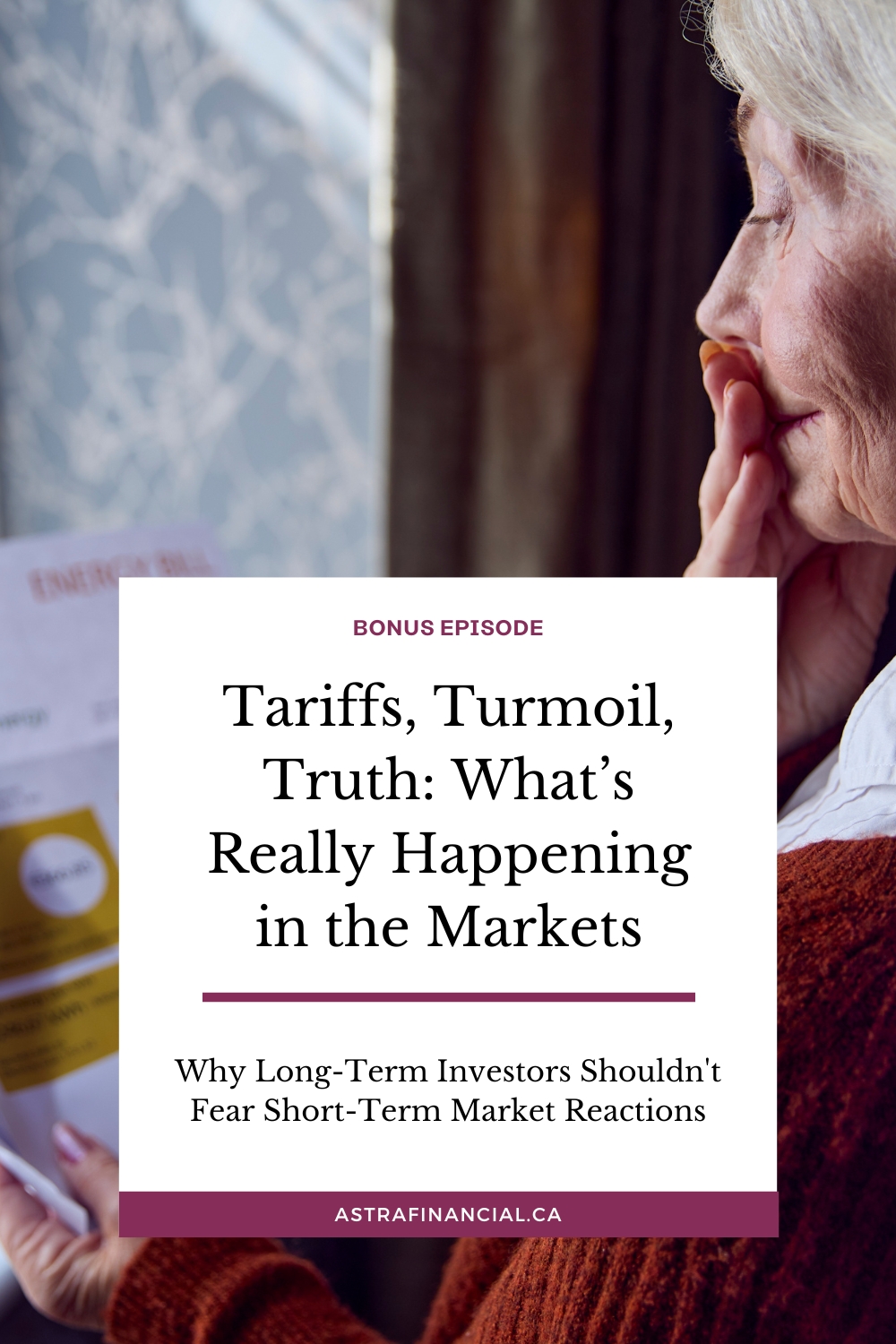Tariffs, Turmoil, Truth: What’s Really Happening in the Markets

Markets are in turmoil as new tariffs shake investor confidence, but is this truly the crisis the headlines suggest? In this episode, we cut through the panic to reveal what these trade policies really mean for your portfolio. Get the straight facts on the recent US tariff announcements, understand their actual impact on different sectors, and discover why seasoned investors see opportunity where others see only risk. Learn how to position yourself to not just weather this storm but potentially profit from it.
Don’t let fear drive your financial decisions—tune in now to gain the clarity and perspective you need during these volatile times.
Show Notes: Tariffs, Turmoil, Truth: What’s Really Happening in the Markets
Hey there, markets are panicking. Jobs are disappearing. Headlines are screaming crisis, but here’s the truth behind the tariffs, why you shouldn’t panic, what comes next and how we’ll use volatility to our advantage.
The breakdown is the US admin announced broad reciprocal tariffs targeting imports from nearly all US trading partners. Starting April 5th, a 10% baseline tariff will be applied to all US imports. Higher country-specific reciprocal tariffs will take effect on April 9th with other countries. Now, this could change and update as time goes on.
How are the markets reacting? While the markets are screaming for more clarity, the reaction to the tariffs has been as expected: negative and full of fear. The hits yesterday and today are because of the fear of this change and the rippling effect on our economy and jobs stats. Canada just released our March numbers and we have lost jobs. This is not gonna help our short-term stock market numbers. This stat announcement is adding a little bit more fuel to the fire today.
Yesterday I had a CBC interview regarding the market’s reaction. It was anticlimactic and not the best interview I’ve ever done. Let me share what I said. I said, this is not our first or last rodeo and we’ve planned for the market volatility in our investments and we are diversified from the major hit we’re gonna see in auto and steel. I think the interviewer was looking for a little more drama with blood and battle scenes, because that is what perks the ears. That’s news. But in all reality, this is another event that causes concern and news, but we know it’s not our first or last correction. It’s never a matter if crisis comes, but when. We plan for it. We take advantage of it because it’s an opportunity to buy. This is when wealth is created.
So what’s next? Well, the situation remains fluid with trade policy developments expected to continue to evolve in the coming weeks and months. President Trump indicated that tariff rates could be reduced if other countries lower trade barriers on US exports. That said, there’s also still room for further escalation. The executive order states that retaliation by US trading partners could result in even higher US tariffs.
This means risks for the global economy, creating uncertainty around growth, business investment, and market stability. Tariffs increase costs. They disrupt supply chains, and they force businesses to adapt in ways that could reshape trade production patterns. Higher prices for consumers will become a reality.
Further interest rate cuts might be coming. Bank of Canada has said that they’re suggesting the response will not mirror the pandemic experience, meaning that interest rate cuts may not always be the solution. So they might be coming, but not always a solution.
Market volatility remains high. This is gonna require disciplined management. Sectors most exposed to US tariffs, particularly manufacturing and export-driven industries, face heightened risk. That said, not all businesses will be impacted negatively. Some will find ways to adapt supply chains and take advantage of government incentives aimed at domestic production.
Navigating this environment requires a measured long-term approach. While risks are front and center, economic and market adjustments will create opportunity. As businesses reposition, our approach remains focused. We’re ensuring your portfolios are well positioned, and we’re monitoring this. We’ve already reviewed every holding in your portfolios. The companies have already planned for this, had the least impact of tariffs, have no debt. Profit margins are exceptional and they’ll continue to grow and make us money. We have to get through the short-term pricing pain of the market.
Short-term challenges are the price investors pay for long-term success. You don’t have to be a good market timer to be a successful investor. You just have to be able to put in the time. In an environment where news headlines seem overwhelmingly alarming, it’s nice to be reminded with cold, hard facts that time in the market beats timing the market. Reach out. Send me a note if you need to talk more.




